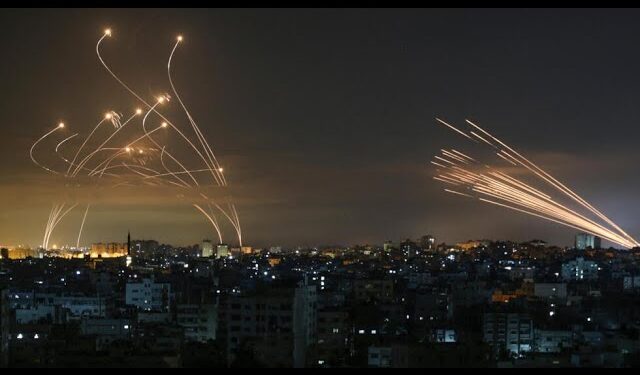Faced with the Israeli strikes of unprecedented magnitude, Iran reveals the limits of its conventional military arsenal. But behind his old planes and aging systems, Tehran relies on a formidable asymmetrical strategy, combining ballistic missiles, suicide bomber and saturation of the defenses. The technological gap is real, but the Iranian threat, it, very concrete.
While nearly 200 Israeli planes struck military and nuclear sites in Iran on the night of Thursday to Friday, a question insistently comes up: what really is the Iranian army in the face of Israeli firepower? If Tehran tried to retaliate by drones, the military comparison between the two countries reveals a deep imbalance … but not without surprises.
An outdated aviation
The first weakness of Iran is its aviation. His fighter planes date from another era: F-4 Phantoms from the 1960s, American F-5 and F-14 bought before the 1979 Revolution, some Russian Mig-29 … and even, according to certain sources, former Mirage F1. Result: the Iranian fleet is aging, difficult to maintain, and unable to carry out long -range offensive operations, especially against Israel.
Opposite, Israel has one of the most modern air armies in the world, equipped with American stealth F-35s, electronic jamming systems and an unrivaled operational experience.
Numerous, but unequal missiles
If Iranian aviation is set back, the country has bet for years on its program of ballistic and cruise missiles. According to American intelligence services, Iran today has the greatest force of missiles in the Middle East. Some devices can reach targets at more than 2,000 km.
This is what makes Iran a feared regional power: these missiles can threaten the American bases in the region, the oil infrastructure of the Gulf, or even Israel. But their precision, their real efficiency and their ability to unravel modern defenses as the Israeli iron dome remain variable.
Drones, the real master card of Iran
The field where Iran has really modernized is that of drones. In recent years, Tehran has invested massively in this inexpensive but formidably effective technology. The “Shahed” drone, for example, is now produced under license by Russia, which uses it in the war in Ukraine.
These drones have several advantages: they fly at low altitude, can travel long distances and are very cheap – up to 20 times cheaper than a cruise missile. In April, Iran sent more than 300 drones and missiles to Israel in a largely symbolic attack, but which showed its ability to saturate enemy defenses.
A discreet, but strategic navy
On the naval level, Iran relies on an ambush strategy rather than on direct confrontation. With his fast stars, his small submarines and his sea mines, he seeks to disrupt maritime traffic in the Persian Gulf and threaten the Strait of Ormuz-a key point for world oil trade.
Even if its large warships are ineffective, Iran hopes to play the card of destabilization rather than that of domination.
An asymmetrical war
Militarily, Israel keeps a clear technological, operational and strategic superiority. But Iran, constrained by sanctions and embargoes, learned to do with little: it puts on asymmetrical war, indirect strikes, symbolic attacks … and surprises.
As a report from the French Institute of International Relations (IFRI) sums up, the true force of Iran lies in the combination of its missiles, its drones, and its ability to saturate the opposing defenses. Not enough to prevail in a frontal war, but enough to dissuade, retaliate … and make an entire region tremble.








